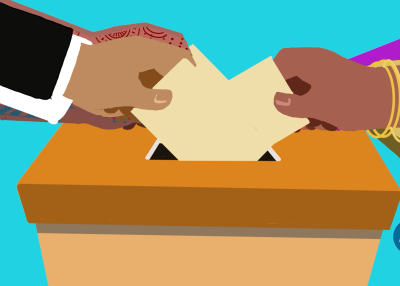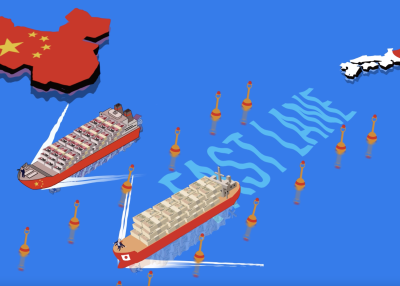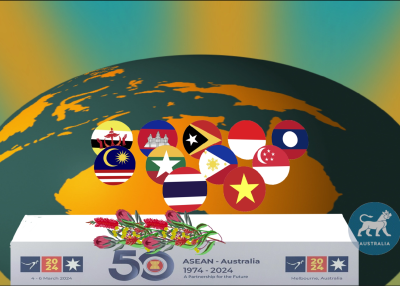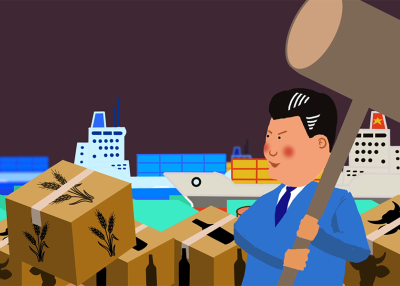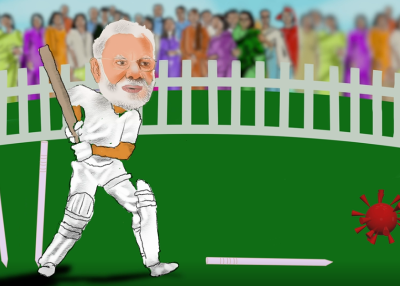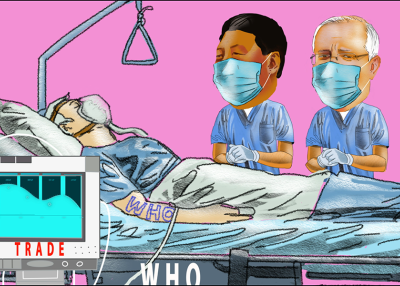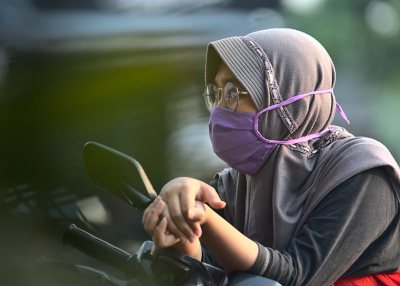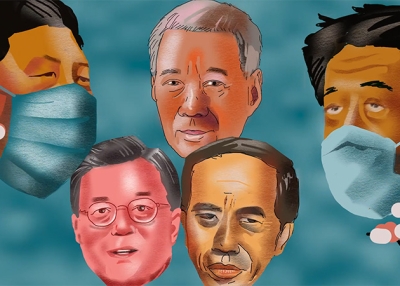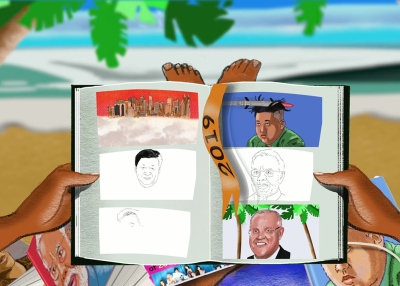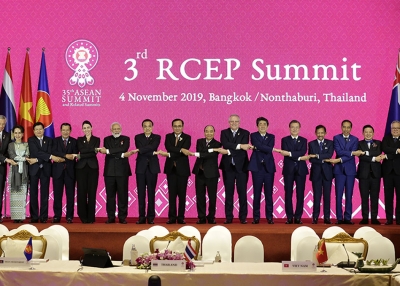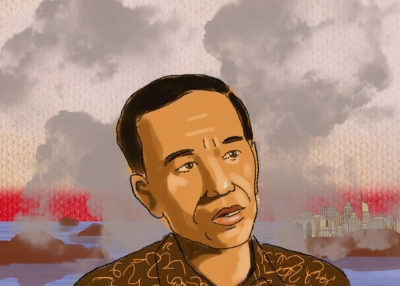Briefing MONTHLY #4 (1) | ASEAN-Australia Special Summit Guide
12 March 2018 | ASEAN says yes really | Interview with Wang Gungwu | Where's the money | The week's agenda
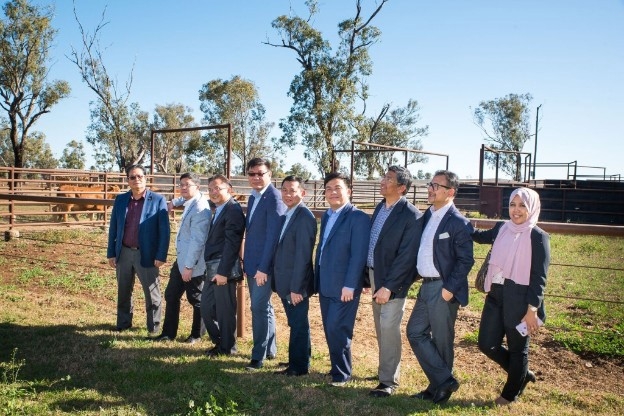
New bonds: ASEAN ambassadors in Toowoomba with the Australia ASEAN Council last year (Source: DFAT)
This weekend’s ASEAN-Australia Special Summit in Sydney is an unprecedented opportunity for Australia to deepen its connections with its closest Asian neighbours at a time of great geopolitical uncertainty. So, we have refocussed Briefing MONTHLY to preview the week’s events today with some broader perspectives and useful background reading. Look out for updates during the summit and a wrap at the end. We hope you will find it useful for keeping in touch with a busy week. And, as always, let us know what you would like to see in Briefing MONTHLY. Meanwhile, Asia Society Australia is proud to kick off the week’s events with our ASEAN 360º panel at King & Wood Mallesons in Sydney today and the visit by Asia Society Global Chair and of one of Asia's finest diplomats Ambassador Chan Heng Chee.
GOLD STAR RISING
It is a truism of modern diplomatic summits that the significant action often happens on the sidelines. And that may well be the case at this week’s gathering when Prime Minister Malcolm Turnbull kicks off official events by signing a new Strategic Partnership with Vietnam on Wednesday. Australia has about a dozen of these agreements now which identify a hierarchy of important interlocutors. But it is still causing some double-takes in the policy-making system that a relatively recent military opponent has now emerged as one of Australia’s most constructive partners in ASEAN. Australian ambassador Craig Chittick obliquely made this point at a KPMG forum last week noting how the Vietnamese economy was doubling every 15 years while some other governments around the region “are not performing so well.” A formal closer relationship was proposed by former Prime Minister Nguyen Tan Dung during a visit in 2015 but not taken up by the Abbott government. The Australian embassy in Hanoi then put the idea back on the government agenda early last year and Vietnam has been waiting to formalise it with a visit to Australia. Despite an opaque authoritarian central government, Vietnam is proving to be a remarkably open and consistent partner for Australia when it comes to discussing regional issues and its domestic reform objectives. This is built on a three-legged stool of shared concern about a more assertive China, growing economic complementarities and the coming of age of Australia’s second generation refugee population many of whom are taking their skills back to their homeland. In contrast to Australia’s struggle to move beyond being perceived as a farm and a quarry in some countries, Ho Chi Minh City consul general Karen Lanyon told the forum: “We have a very good brand in Vietnam, very trusted. We’re particularly known for innovative products.” The massive change in the both the government to government relationship and the business engagement is encapsulated by the way aid-funded bridge building over the Mekong River which was once the high point in the relationship has been replaced by technology sharing joint ventures in areas such as aquaculture. The fast-growing prawn farming venture Viet-UCrun by refugee returnees is the classic example of this. “There will be no more bridge building, our role now is to be a policy partner,” says Chittick. The fascinating question now is how far the new bilateral bonds built negotiating issues such as the Trans-Pacific Partnership trade deal can be transferred to Australia’s desire for closer institutional links in ASEAN to expand an existing economic agreement and discuss the rise of China.
ASEAN SAYS YES, REALLY
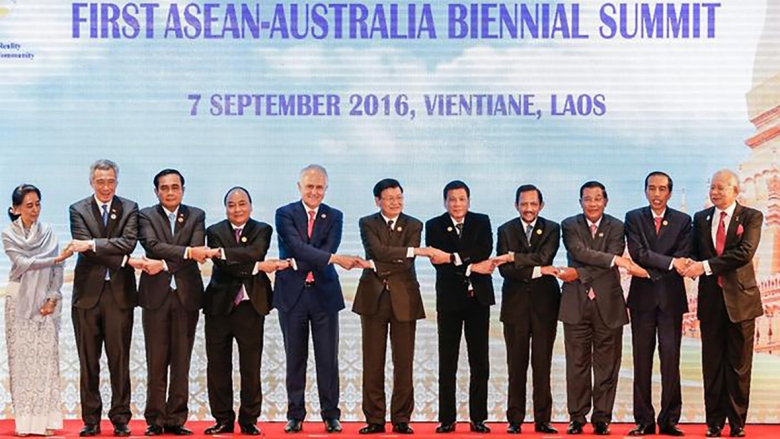
Where it all began: Prime Minister Malcolm Turnbull meeting ASEAN leaders for the first time in 2016
This week’s summit has its origins in the last day of Malcolm Turnbull’s first trip abroad as prime minister when he asked Australian officials at the 2015 East Asian Summit in Malaysia what could be done to advance Australia’s relationship with ASEAN. ASEAN leaders usually conduct joint meetings with foreign leaders on the sidelines of their own annual summit in the region, but Turnbull asked about inviting them to Australia for the first time. By the next year’s summit in Laos (pictured) the ambitious idea of a special meeting in Australia was well advanced even though Barack Obama had already beaten Australia to the punch with a similar summit in California earlier that year. Officials warned Turnbull to look out for a Southeast Asian ‘yes’ which would really mean ‘no.’ But he bonded with the leaders of Indonesia, Malaysia and Singapore in particular and got a surprisingly positive response. ASEAN officials warned that a special summit had to rise above the conventional meetings in the region leading to this week’s extensive agenda which stretches from a soccer game between young women from Australia and Thailand to a private session on counter-terrorism cooperation.
The Summit occurs at a curious moment for ASEAN which is promoting its economic integration to the world even though most members are looking inward due to diverse domestic political challenges. The busy agenda will diffuse the big issue hanging over the whole event which is how Australia can pursue closer institutional ties with the ASEAN group at this time in line with the recent Foreign Policy White Paper. It spoke of an “elevated commitment to ASEAN” and “enduring ties with the countries of Southeast Asia.” That language hints at some ambivalence about the right balance between the notoriously slow-moving ASEAN institution and the fast moving Southeast Asian countries of the moment, such as Vietnam as noted above. But the new Indo-Pacific policy position is that ASEAN remains very important to Australia as the convening mechanism or forum for conducting diplomacy across Asia. However bilateral relationships with member countries will be more important in prosecuting issues beyond Southeast Asia such as a rising China and global economic liberalisation.
There are many options on the table for pursuing a closer institutional relationship starting quite modestly with the review of the ASEAN Australia New Zealand free trade agreement which is now underway. At the other end of the spectrum is the more radical idea of actually joining ASEAN (See Graeme Dobell of ASPI). In between are some ginger group options which are untested. The relatively new Comprehensive Strategic Partnership with Singapore is built on a vision of the two countries being as integrated as Australia and New Zealand which could be a benchmark for other Southeast Asian countries. Meanwhile Australian National University academic John Blaxland has been pushing MANIS (from the Indonesian word for sweet) which would be a halfway house for greater cooperation involving Malaysia, Australia, NZ, Indonesia and Singapore. One measure of the summit’s success will be how much it charts a pathway for greater institutional engagement with Australia’s closest Asian neighbours in the lead-up to the 50th anniversary of the relationship with ASEAN in 2024. One way (and very much the ASEAN way) would be to establish a non-government group of respected figures to come back with some ideas for official consideration.
All of this will make for a great debate at the ASEAN Dialogue at PwC in Sydney on Tuesday which will see nine Australian institutions with Southeast Asian interests put their traditional rivalries aside for a day to peer into the future.
DIPLOMATICALLY SPEAKING
“A lot of them will have studied in Victoria but that’s alright, it’s Team Australia when you are going to these sorts of events,” NSW Minister for Trade and Industry, Primary Industry and Rural Water Niall Blair on meeting on alumni graduates from Victorian universities during a recent trip to Jakarta.
INTERVIEW: WANG GUNGWU
Australia’s “Special” ASEAN summit is the latest piece in a maze of regional diplomatic and integration architecture stretching all the way back to Filipino national hero Jose Rizal’s dream a century ago of uniting the Malay peoples in what came to be known as Maphilindo. So, to cut through the diplomatic talking points we asked the historian Wang Gungwu, Emeritus Professor at the Australian National University and chairman of the East Asia Institute at the National University of Singapore, to put things in perspective.
ASEAN unity: “They like to do what they can do as a group, but they know that their internal interests differ quite considerably and are not going to go away so they have to work out something minimally at least. National interests have to be somehow mashed into regional interests.”
Australia joining ASEAN: “I thought it was (once) a good idea but somehow it did not attract the ASEAN countries, there was not a great deal of enthusiasm. Over the years it has just been put aside. I’m not sure the timing is right now.”
The Indo-Pacific: “That actually fits in with the Chinese picture much more than people realise. This is the recognition that historically for thousands of years the Indian Ocean with the western Pacific has been the artery of trade (in Asia) and relatively peaceful trade - the trade that bought civilisation, ideas, culture. And that happened without the help of the Atlantic countries and to the Chinese, and the Indians, for that matter this is quite normal.”
Where ASEAN fits: “The locational centrality of Southeast Asia (in the Indo-Pacific) is more evident than ever. And that is very significant.”
Where Australia fits: “Your eastern seaboard has been dominating. It is always the view from Sydney and Canberra and Melbourne and they look to the western Pacific. But half your border is in the Indian Ocean. The thinking in Canberra must readjust because the Asia Pacific emphasis of the last 40 years has made everybody look the other way and nobody was looking westward. This is not just a temporary shift. This is a genuine shift of economic interests. The Indian Ocean is not an American dream or vision, the Indian Ocean – the Indo-Pacific – (for Asians) is an historic reality or norm.”
WHERE’S THE MONEY
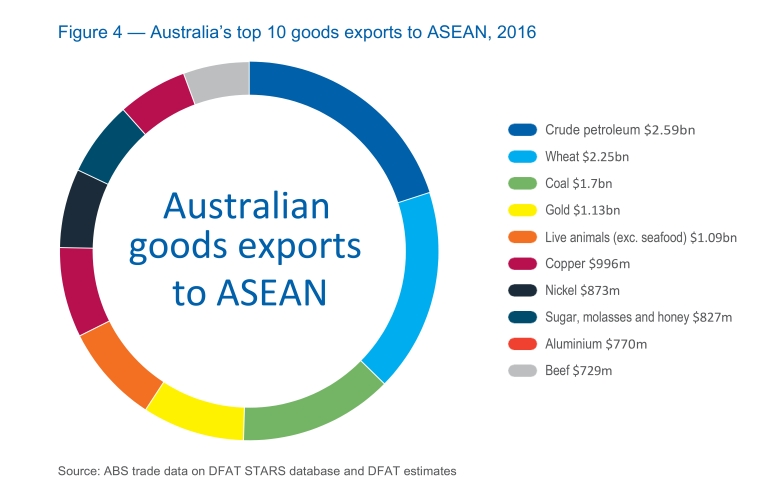
About 120 selected chief executives will break into roundtable groups next Saturday for concentrated discussion on the key areas where Australia’s economic connections to ASEAN could increase. The roundtable topics provide an insight into the future opportunities. Here’s some useful background reading.
Infrastructure: The Asian Development Bank’s 2017 study of regional infrastructure has the most commonly quoted numbers for future needs. It says Southeast Asia, led by Indonesia, needs to spend about US$3 trillion on new infrastructure by 2030 to maintain its economic growth. The currently unfinanced proportion of this is estimated to be about 4% of the region’s annual GDP. This analysis on the Jakarta-Bandung high speed rail line is in insight into the development pitfalls ahead.
Agriculture supply chains: Some of Australian regions are already building their own links to Southeast Asia and the broader region to create export and investment links. This article is about how ASEAN ambassadors went to Toowoomba with the Australia ASEAN Council to see for themselves what is happening in regional Australia. From a different perspective this Economist Intelligence Unit study shows how food exporters must pay attention to the way rising obesity in ASEAN will change regulatory approaches and consumer demand.
Digital transformation: The latest edition of the Google-Temasek report on Southeast Asian ecommerce says this sector is growing faster than previously thought and there could be a $200 billion internet economy by 2025. Ride sharing apps like GoJek and Grab are driving broader ecommerce in ASEAN in areas such as cashless payments. This article examines how South East Asia is becoming a major battleground for Chinese and US digital commerce giants. And software developer Mitrais has been in this space longer than most.
Tourism and aviation: A single ASEAN aviation market could be in place by 2020, says Malaysian analyst Wan Saiful Wan Jan. This is the World Economic Forum report on the most competitive regional tourism destinations led by Singapore. December’s Briefing MONTHLY outlined Indonesian Investment Minister Tom Lembong’s big plans for tourism and education integration with Australia.
Advanced manufacturing: The traditional manufacturing industry in ASEAN is facing competition from cheaper labour countries at one end and reshoring back to industrialised countries at the other. This McKinsey study outlines how these countries can regain their stature as factories to the world. This article examines how two of Australia’s oldest manufacturers in the region – Bluescope Steel and Boral – have survived.
Future energy: The International Energy Agency’s 2017 outlook for the region predicts energy demand will grow by two thirds by 2040 which will be about 10% of the growth in world demand. The ASEAN Energy Center has several studies about what role renewable energy might play.
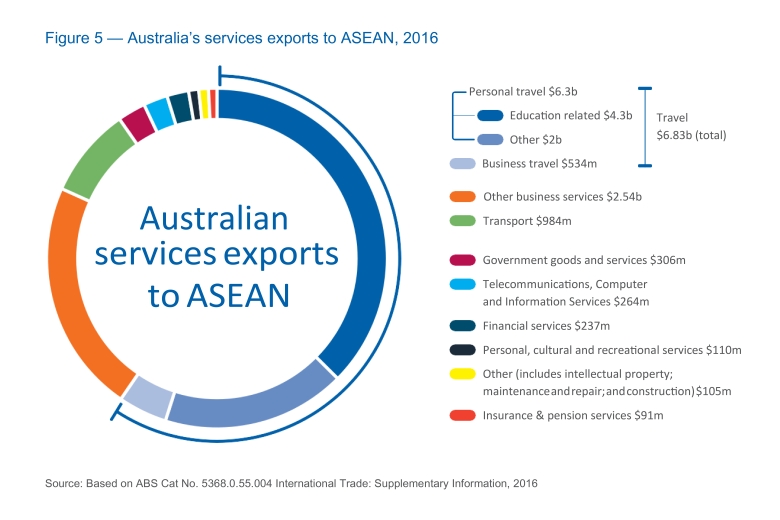
ON THE SIDELINES
As we noted above about Vietnam, this is not just an ASEAN summit. It will also include a packed agenda of bilateral meetings by Prime Minister Malcolm Turnbull with Southeast Asian leaders in the days immediately before and after.
Here’s a quick catch up on the state of play with some of those bilateral relationships:
Vietnam: Kyle Springer, from the Perth US Asia Centre, outlines how Vietnam is poised to become an important economic partner for Australia in this timely new study.
Indonesia: Tim Lindsay, from Melbourne University’s Asian Law Centre, reminded us after last year’s Foreign Policy White Paper that Indonesians pay less attention to the bilateral relationship than Australians.
Singapore: Euan Graham, from the Lowy Institute for International Policy, says the still relatively new Comprehensive Strategic Partnership shows how Singapore is a natural partner for Australia.
Malaysia: Here’s DFAT’s publication for the 60th anniversary of diplomatic relations with Malaysia. And an update on the election year ahead from the East Asian Forum.
Myanmar: Issac Kfir, from the Australian Strategic Policy Institute, says Australia should look to its experience in the Cambodia peace process for a way to address the Rohingya refugee crisis.
THE BIG PICTURE
Money: Sanchita Basu Das, at Singapore’s ISEAS-Yusof Ishak Institute, is one of the best analysts of the ASEAN Economic Community. This long study examines the implementation challenges. For a shorter take from the resident Australian business community the AustCham ASEAN survey is a great new resource. The latest version will be released on Thursday.
Culture: This Guardian article provides a neat insight into flourishing modern art scene in the region amid some challenging political pressures. Southeast Asian artists will feature at the Sydney Biennale starting this Wednesday.
History: There’s more to Southeast Asia than summits. One of the best recent accounts of the region is Blood and Silk by journalist turned conflict mediator Michael Vatikiotis, who is at Sydney University on Monday. We reviewed the book in December’s Briefing MONTHLY but, in short, it is not happy reading for the integration story which will be on display this week.
ADA LAGI?*
Well, yes, there is much, much more to this than diplomacy and commerce: from a weeklong workshop for young Australian and Southeast Asian leaders to a gathering of teachers from the BRIDGE program which allows Australian students to meet online with ASEAN counterparts. *And a big shout out to the students and staff at Sydney’s Greenway Park Public School who already put all this highbrow policymaking stuff into practice every day by integrating the Malay/Indonesian language into their activities.
Here’s today’s agenda:
Disruptive Asia ASEAN Edition launch: Asia Society Australia will officially launch the first essays under the ASEAN edition of its Disruptive Asia project at the ASEAN 360º event (below).
ASEAN 360º: Asia Society Global Co-Chair and Singapore ambassador-at-large Chan Heng Chee, ANZ Philippines chief executive Anna Green, Sydney University academic Aim Simpang, UNSW academic Melissa Crouch and former Fairfax Indonesia correspondent Jewel Topsfield are speaking at King & Wood Mallesons in Sydney.
Regional Diplomacy: Former Indonesian Foreign Minister Marty Natalegawa is speaking at Sydney University followed by a discussion with Michael Vatikiotis.
Asian study: At the Art Gallery of NSW tonight, Asia Society Global Co-Chair Chan Heng Chee and Macquarie University Deputy Vice-Chancellor Professor Kevin Jameson will launch a new scholarship to allow 50 Macquarie University students to study in Asia every year.
Starting young: Australia-ASEAN Emerging Young Leaders Program gets underway in Melbourne.
ABOUT BRIEFING MONTHLY
Briefing MONTHLY is a public update with news and original analysis on Asia and Australia-Asia relations. As Australia debates its future in Asia, and the Australian media footprint in Asia continues to shrink, it is an opportune time to offer Australians at the forefront of Australia’s engagement with Asia a professionally edited, succinct and authoritative curation of the most relevant content on Asia and Australia-Asia relations. Focused on business, geopolitics, education and culture, Briefing MONTHLY is distinctly Australian and internationalist, highlighting trends, deals, visits, stories and events in our region that matter.
Partner with us to help Briefing MONTHLY grow. Exclusive partnership opportunities are available. For more information please contact [email protected]
Read previous issues and subscribe >>
